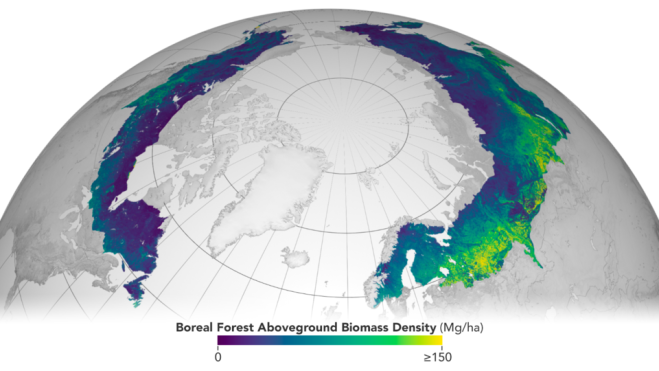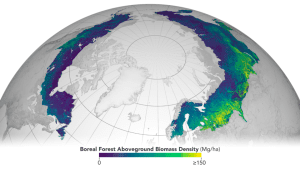
 On Oct. 29, 2021, ESA and NASA publicly released the first globally harmonzed assessment of aboveground biomass—information that’s vital for managing global climate change. The Multi-Mission Algorithm and Analysis Platform (MAAP) provides seamless access to aboveground biomass information from both NASA and ESA Earth observation data. The revolutionary open-science tool is now fully operational and accessible online.
On Oct. 29, 2021, ESA and NASA publicly released the first globally harmonzed assessment of aboveground biomass—information that’s vital for managing global climate change. The Multi-Mission Algorithm and Analysis Platform (MAAP) provides seamless access to aboveground biomass information from both NASA and ESA Earth observation data. The revolutionary open-science tool is now fully operational and accessible online.
MAAP is the culmination of a two-year NASA and ESA effort and reflects the cooperation between the two agencies under the NASA and ESA JPPG (Joint Program and Planning Group) Joint Working Group (WG) on Ground Segment and Operations.
The MAAP platform enables international scientists and researchers to collaboratively develop algorithms and code as well as analyze and visualize large datasets acquired from sources including satellite instruments, the International Space Station, and airborne and ground campaigns. The large amounts of data and high-performance computing required for MAAP, along with a shared code repository and catalog, are stored and managed in the cloud. MAAP capabilities are supported and shared between NASA and ESA.
The initial application of MAAP focuses on above-ground biomass to help determine the size and carbon content of Earth’s forests. These data are vital for informing our understanding and forecasting of climate change, including regular updates to the Intergovernmental Panel on Climate Change (IPCC).
While biomass is the first application of MAAP, it easily can be adapted for collaborative exploration across the breadth of science data and scientific disciplines available through NASA, ESA and similar research agencies.
The MAAP dashboard can be accessed here.
Image Credit: MAAP Science Team/NASA Arctic-Boreal Vulnerability Experiment (ABoVE)
